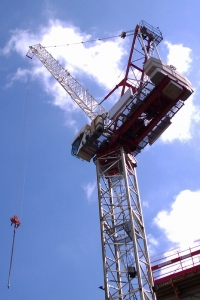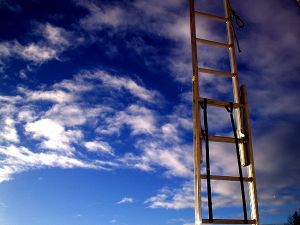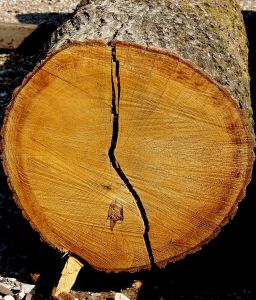On-the-job injuries are not only traumatic, they can result in lifelong debilitation or even death. While civil negligence lawsuits are generally not permitted in these instances, workers and their survivors may be entitled to workers’ compensation benefits.
Employers have a duty to maintain safe working environments for employees, and when they do not, there needs to be accountability.
 According to the United States Occupational Safety and Health Administration (OSHA), a New England manufacturer of stairs and cabinets has been fined $62,000 for violations involving machinery, dangerous chemicals and fire hazards after a safety investigation launched after a worker lost two fingers in an unsafe machine on which he was working.
According to the United States Occupational Safety and Health Administration (OSHA), a New England manufacturer of stairs and cabinets has been fined $62,000 for violations involving machinery, dangerous chemicals and fire hazards after a safety investigation launched after a worker lost two fingers in an unsafe machine on which he was working.
OSHA noted that if the machine had properly guarded, worker would not have lost his fingers. OSHA discovered numerous additional hazards while investigating this incident.
A dust collection system, crucial in an area where sawing and drilling of wood occurs, lacked a required spark detector designed to prevent heated metal from entering the system and causing an explosion. Investigators also found improper disposal of flammable rags and spray booths lines with layers of old flammable solvent. Plus, there was flammable material in and around electric outlets, elevated workstations without safety railings, too few emergency exits, no emergency showers in the event of chemical exposure, insufficient protective gear and training and other serious violations.
Continue reading
 Massachusetts Workers Compensation Lawyers Blog
Massachusetts Workers Compensation Lawyers Blog


 OSHA inspectors discovered that a conveyor belt’s rotating parts were not properly guarded to prevent the hands and fingers of workers from getting caught in the mechanism. Conditions similar to this have been known to cause pinched hands and fingers, crushed or amputated hands and fingers, contusions and nerve damage. The law requires these conveyor belt systems be properly guarded so no part of an employee’s body can come into contact with moving machinery.
OSHA inspectors discovered that a conveyor belt’s rotating parts were not properly guarded to prevent the hands and fingers of workers from getting caught in the mechanism. Conditions similar to this have been known to cause pinched hands and fingers, crushed or amputated hands and fingers, contusions and nerve damage. The law requires these conveyor belt systems be properly guarded so no part of an employee’s body can come into contact with moving machinery. According to a recent news article in the
According to a recent news article in the  The employee was rushed to a local Boston hospital following his workplace accident. His condition has not been released, and authorities do not yet know what caused the fall to occur.
The employee was rushed to a local Boston hospital following his workplace accident. His condition has not been released, and authorities do not yet know what caused the fall to occur. The two men were attending a sales meeting at local golf course with representatives from their respective sales accounts. Defendant was driving a golf cart in which plaintiff was riding as a passenger when defendant lost control of the car and crashed into a retaining wall near hole six. Both men were thrown clear of the cart, and plaintiff injured his shoulder.
The two men were attending a sales meeting at local golf course with representatives from their respective sales accounts. Defendant was driving a golf cart in which plaintiff was riding as a passenger when defendant lost control of the car and crashed into a retaining wall near hole six. Both men were thrown clear of the cart, and plaintiff injured his shoulder. It has been reported that the worker was a full-time machine operator who was crushed between an activated transfer paddle and an electrical box. The worker suffered multiple fractures to his pelvis and was seriously injured.
It has been reported that the worker was a full-time machine operator who was crushed between an activated transfer paddle and an electrical box. The worker suffered multiple fractures to his pelvis and was seriously injured. In 1991, he stopped working in the mines due a knee injury. The following year, he was found to be totally disabled due to respiratory problems. In 2008, after receiving workers’ compensation benefits for years from the Federal Employee’s Compensation Act (FECA), he applied for benefits from the Black Lung Benefits Act (BLBA) fund. Throughout out his time on the job, he was constantly exposed to coal dust.
In 1991, he stopped working in the mines due a knee injury. The following year, he was found to be totally disabled due to respiratory problems. In 2008, after receiving workers’ compensation benefits for years from the Federal Employee’s Compensation Act (FECA), he applied for benefits from the Black Lung Benefits Act (BLBA) fund. Throughout out his time on the job, he was constantly exposed to coal dust. Witnesses report that a large piece of wood was kicked out of the chipper and hit the worker in the back. The piece of wood was reported to approximately two feet long and a foot wide.
Witnesses report that a large piece of wood was kicked out of the chipper and hit the worker in the back. The piece of wood was reported to approximately two feet long and a foot wide. In a recent
In a recent 